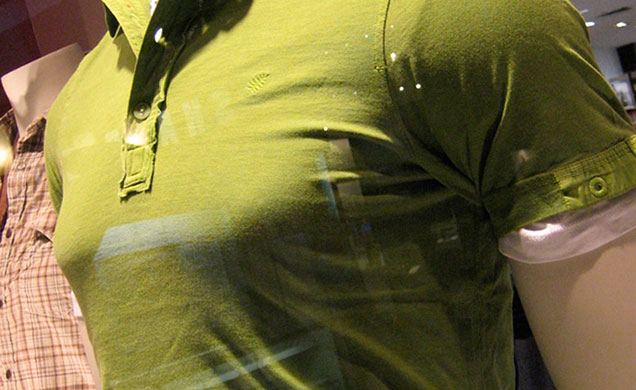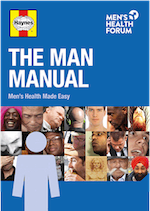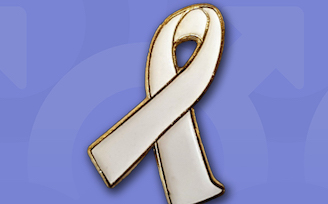Breasts FAQs

According to the British Association of Aesthetic Plastic Surgeons, male breast reduction increased by 446% from 2006 to 2011. Having said that it is still a relatively small number compared to other operations - up from 177 ops in 2006 to 790 in 2011.
But the emails started buzzing around the Men's Health Forum when we read a report quoting doctors who said that as many as half of men could be effected.
What are the signs of gynaecomastia?
Signs vary from a small amount of extra tissue around the nipples to more prominent breasts. It can affect one or both breasts. Sometimes, the breast tissue can be tender or painful, but this isn’t always the case.
What causes gynaecomastia?
Gynaecomastia can have several causes.
Hormone imbalance
Gynaecomastia can be caused by an imbalance between the sex hormones testosterone and oestrogen. Oestrogen causes breast tissue to grow. While all men produce some oestrogen, they usually have much higher levels of testosterone, which stops the oestrogen from causing breast tissue to grow.
If the balance of hormones in his body changes, this can cause a man’s breasts to grow. Sometimes, the cause of this imbalance is unknown.
The growth in breast tissue is not due to extra body fat from being overweight, so losing weight or doing more exercise will not improve the condition.
Newborn baby boys
Gynaecomastia can affect newborn baby boys because oestrogen passes through the placenta from the mother to the baby. This is temporary and will disappear a few weeks after the baby is born.
Puberty
During puberty, boys’ hormone levels vary. If the level of testosterone drops, oestrogen can cause breast tissue to grow. Many teenage boys have some degree of breast enlargement. Gynaecomastia at puberty usually clears up as boys get older and their hormone levels become more stable.
Older age
As men get older, they produce less testosterone. Also, older men tend to have more body fat, and this can cause more oestrogen to be produced. These changes in hormone levels can lead to excess breast tissue growth.
Other causes
In rare cases, gynaecomastia can be caused by:
- side effects of medication, such as anti-ulcer drugs or medication for heart disease
- illegal drugs, such as cannabis or anabolic steroids
- drinking too much alcohol
- a health abnormality, such as kidney failure or liver disease
- Klinefelter’s syndrome, a rare genetic disorder
- lumps or infection in the testicles
Treatment for gynaecomastia
If you’re worried about breast tissue growth, see your GP.
If your GP thinks treatment is needed, there are two types of treatment for gynaecomastia:
- surgery to remove the excess breast tissue
- medication to adjust a hormone imbalance
Your GP can discuss the treatment options with you. Find out more about male breast reduction surgery.
Procedures such as breast reduction surgery are not usually available on the NHS unless there is a clear medical need for them. For example, if you have had gynaecomastia for a long time, it has not responded to other treatments and it is causing you a lot of distress or pain, your GP may refer you to a plastic surgeon to discuss the possibility of surgery.
Always see your GP if the area is very painful or there is an obvious lump. Sometimes, the lump may need to be removed.
Gynaecomastia is not related to breast cancer but if worried about breast swelling, see a GP.
We don't currently post comments online but are always keen to hear your feedback.
MAIN IMAGE: Man Boobs? by Todd Baker licensed under CC BY 2.0
Date published
02/04/14
Date of last review
02/04/14
Date of next review
02/04/17
References
|
The Men’s Health Forum need your support It’s tough for men to ask for help but if you don’t ask when you need it, things generally only get worse. So we’re asking. In the UK, one man in five dies before the age of 65. If we had health policies and services that better reflected the needs of the whole population, it might not be like that. But it is. Policies and services and indeed men have been like this for a long time and they don’t change overnight just because we want them to. It’s true that the UK’s men don’t have it bad compared to some other groups. We’re not asking you to ‘feel sorry’ for men or put them first. We’re talking here about something more complicated, something that falls outside the traditional charity fund-raising model of ‘doing something for those less fortunate than ourselves’. That model raises money but it seldom changes much. We’re talking about changing the way we look at the world. There is nothing inevitable about premature male death. Services accessible to all, a population better informed. These would benefit everyone - rich and poor, young and old, male and female - and that’s what we’re campaigning for. We’re not asking you to look at images of pity, we’re just asking you to look around at the society you live in, at the men you know and at the families with sons, fathers and grandads missing. Here’s our fund-raising page - please chip in if you can. |


